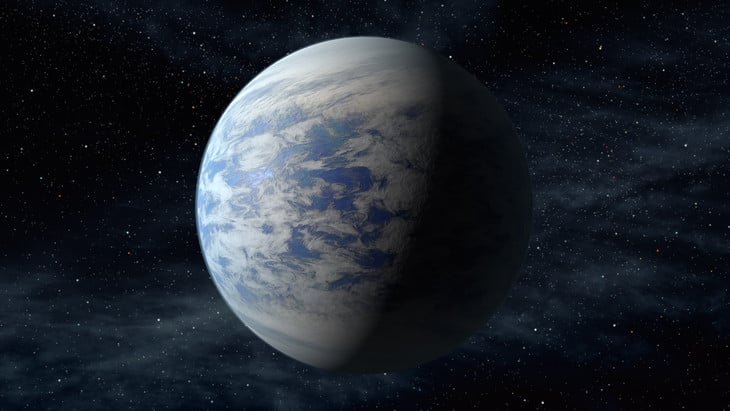
The Canadian Hydrogen Intensity Mapping Experiment (CHIME), a revolutionary new radio telescope, recently made its first-ever detection of a possible Fast Radio Burst (FRB)
Continue reading

How about that Total Lunar Eclipse this past July 13th? It has been a busy year for astronomy for sure, with two total lunar eclipses, a comet fading out from an unexpected burst of glory and Saturn, Jupiter and Mars reaching opposition in quick succession.
Now, watch for a rare event, with the final eclipse for 2018 coming up on Saturday, August 11th, with a partial solar eclipse spanning northern Europe and the Arctic.
Continue reading

According to a new study, it is possible that extra-solar planets with no plate tectonics might be capable of supporting life, contrary to previous assumptions.
Continue reading

As part of their 3D-Printed Habitat Centennial Challenge, NASA recently awarded five teams with a total of $100,000 for their designs for Martian habitats.
Continue reading

The Cold Atom Laboratory (CAL), which was installed aboard the ISS this past May, just reached a milestone by creating ultracold particles for the first time in space.
Continue reading

The Fenix propulsion system, a pen-sized thruster designed by Italian tech company D-Orbit, could revolutionize the way CubeSats operate in orbit.
Continue reading

According to a new NASA-supported study, Mars does not have enough carbon dioxide to undergo the terraforming process
Continue reading

According to a new study from the Earth-Life Science Institute, it may be time to fine-tune what astronomers mean by "habitable zone"
Continue reading

The Universe Today Ultimate Guide to Viewing the Cosmos is our practical book on how to get into astronomy, written by David Dickinson with Fraser Cain. It's filled with everything you need to become an amateur astronomer, with hundreds of photographs taken by other amateurs.
Continue reading

For the first time in history, Einstein's theory of General Relativity was confirmed by observing a star orbiting the supermassive black hole at the center of our galaxy
Continue reading

Continue reading

Comets are one of those great question marks in observational astronomy. Though we can plot their orbits thanks to Newton and Kepler, just how bright they'll be and whether or not they will fizzle or fade is always a big unknown, especially if they're a dynamic newcomer from the outer solar system just visiting the inner solar system for the first time.
We had just such a surprise from a cosmic visitor over the past few weeks, as comet C/2017 S3 PanSTARRS erupted twice, brightening into binocular visibility.
Continue reading

The Hubble Space Telescope took advantage of the fact that both Saturn and Mars are at opposition this summer and snapped some of the clearest and most beautiful images of them yet.
Continue reading

A new study led by NASA's Ames Research Center has indicated that microorganisms are not likely to survive in Mars' dry environment, but could be preserved there.
Continue reading

Using 13 years of data obtained by Cassini's Visual and Infrared Mapping Spectrometer (VIMS), the Cassini imaging team has produced some of the most detailed images of Titan to date.
Continue reading

According to a new study by a European team, the Moon may have been habitable during two periods in the past.
Continue reading

A new analysis of 15 years of data from the Mars Express probe by a team of Italian scientists shows compelling evidence for their being liquid water beneath Mars southern polar region.
Continue reading

According to a new study by a team from the University of Michigan, Andromeda survived a merger with a massive galaxy 2 billion years ago.
Continue reading

One of the top astronomy events of 2018 occurs on the evening of Friday, July 27th, when the Moon enters the shadow of the Earth for a total lunar eclipse. In the vernacular that is the modern internet, this is what's becoming popular as a "Blood Moon," a time when the Moon reddens due to the refracted light of a thousand sunsets falling on it as the pass through the ruddy limb of the Earth.
Continue reading

Thanks to a new study led by NASA's Jet Propulsion Laboratory, future missions to Europa will be more likely to find spots in the moon's ice sheet where biosignatures still exist.
Continue reading

 Universe Today
Universe Today


















